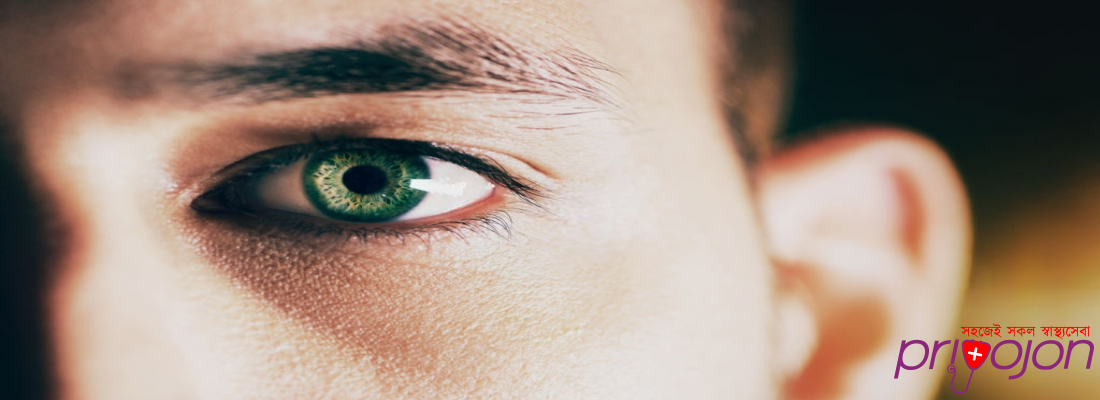Shared on 06-04-2020
6 Common Retinal Diseases
6 Common Retinal Diseases

The retina is the third and innermost layer of the eye that catches light and helps us focus on things so that we can see clearly. This is one of the most important parts of the eye. The retina is made up of a number of light sensitive cells that are connected to nerve fibres. These nerve fibres help in transmitting the light into imagery through neuro impulses that reach the brain. There are many conditions and diseases that can affect this part of the eye.
- Macular degeneration: This is a common eye disease that is usually associated with aging and comes with symptoms like blurry vision and even blindness after a certain point. It can prevent a person from seeing things in a clear and sharp manner. This disease goes through a slow progression and can be of the dry or wet type.
- Diabetic retinopathy: This condition can leave one visually impaired in the long run with complete blindness. This complication usually arises when a person is suffering from diabetes. It can be proliferative or non-proliferative depending on the blood and fluid leakage as well as the severity of the inflammation in the retina. While the symptoms are very subtle, the advancement can begin at a very young age.
- Retinal vein occlusion: This condition usually happens when the veins of the retina gets obstructed or gets a blockage. This can lead to reduced blood flow to the entire area which can lead to significant vision impairment and an increase in the pressure on the eyes.
- Retinal tears and detachments: When the retina get pulled and is subsequently lifted from its normal position, this can lead to a condition known as retinal tears and detachment. If this condition is not treated properly and on time, it can lead to vision loss in the long run. These tears can happen in smaller sections of the retina which can lead to retinal breaks causing detachments in the retina. This condition is most commonly seen in people over the age of 60.
- Posterior vitreous detachment: The vitreous is a gel like layer that allows the eye to retain its shape even as it allows the light to enter the eye and reach the retina. When the thin fibres connecting this layer and the retina get degenerated, there is a detachment that takes place between the two, leading to this condition.
- Epiretinal membrane and macular holes: The scar like tissue known as the epiretinal membrane that lines the back of the eyes. When the macular tissue gets distorted due to this membrane, a macular hole may form which can lead to progressive vision impairment.
The retina is the third and innermost layer of the eye that catches light and helps us focus on things so that we can see clearly. This is one of the most important parts of the eye. The retina is made up of a number of light sensitive cells that are connected to nerve fibres. These nerve fibres help in transmitting the light into imagery through neuro impulses that reach the brain. There are many conditions and diseases that can affect this part of the eye.
- Macular degeneration: This is a common eye disease that is usually associated with aging and comes with symptoms like blurry vision and even blindness after a certain point. It can prevent a person from seeing things in a clear and sharp manner. This disease goes through a slow progression and can be of the dry or wet type.
- Diabetic retinopathy: This condition can leave one visually impaired in the long run with complete blindness. This complication usually arises when a person is suffering from diabetes. It can be proliferative or non-proliferative depending on the blood and fluid leakage as well as the severity of the inflammation in the retina. While the symptoms are very subtle, the advancement can begin at a very young age.
- Retinal vein occlusion: This condition usually happens when the veins of the retina gets obstructed or gets a blockage. This can lead to reduced blood flow to the entire area which can lead to significant vision impairment and an increase in the pressure on the eyes.
- Retinal tears and detachments: When the retina get pulled and is subsequently lifted from its normal position, this can lead to a condition known as retinal tears and detachment. If this condition is not treated properly and on time, it can lead to vision loss in the long run. These tears can happen in smaller sections of the retina which can lead to retinal breaks causing detachments in the retina. This condition is most commonly seen in people over the age of 60.
- Posterior vitreous detachment: The vitreous is a gel like layer that allows the eye to retain its shape even as it allows the light to enter the eye and reach the retina. When the thin fibres connecting this layer and the retina get degenerated, there is a detachment that takes place between the two, leading to this condition.
- Epiretinal membrane and macular holes: The scar like tissue known as the epiretinal membrane that lines the back of the eyes. When the macular tissue gets distorted due to this membrane, a macular hole may form which can lead to progressive vision impairment.
Popular Health Tips
The retina is the third and innermost layer of the eye that catch...
Medically reviewed by
Mr Dr. M. A. Rashid
MBBS, FCPS (Physical Medicine)
10 Years of Experience
- Written by the Priyojon Editorial Team
